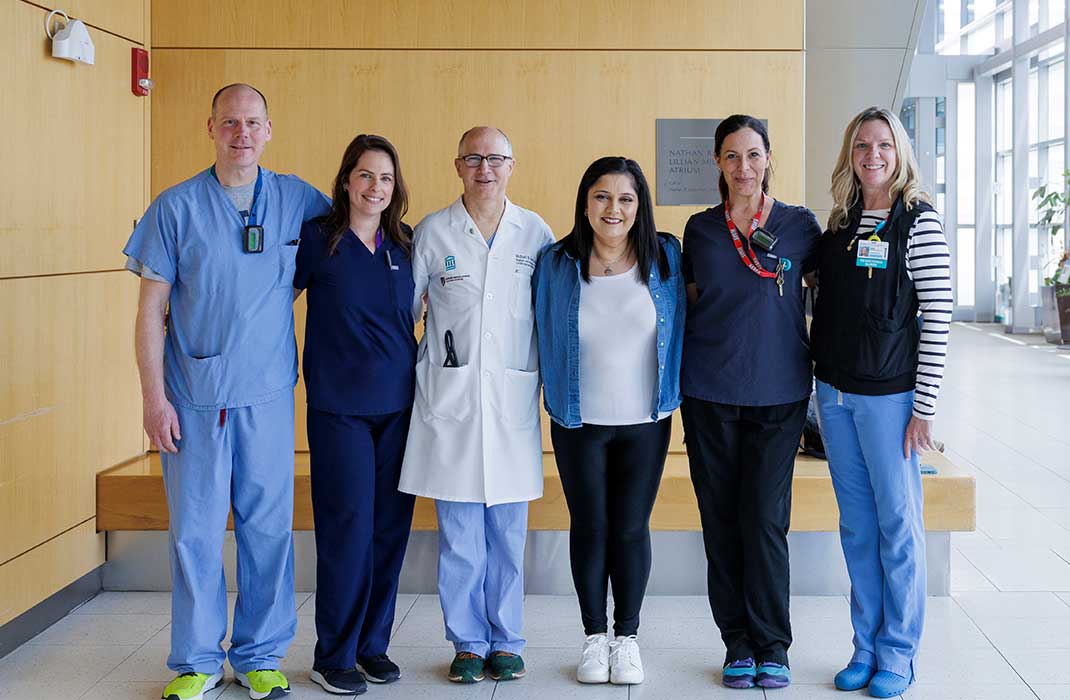A VAD for destination therapy can last five years or longer. Longevity depends on your age, overall health, and other factors.
-
- Find Care
-
- Visitor Information
- Find a Location
- Shuttles
- Visitor Policies
-
-
-
- Our Virtual Care Options
- Virtual Urgent Care
- Virtual Visits for Primary & Specialty Care
- Online Second Opinions
- Participate in Research
-
- Contact us
-
- For Innovators
- Commercialization Guide for Innovators
-
-
- Research News
- Alzheimer's Disease
- Artificial Intelligence
-
- Overview
-
- Overview
- Getting Started
- New to Mass General Brigham
- International Patient Services
- What Is Patient Gateway?
- Planning Your Visit
- Find a Doctor (opens link in new tab)
- Appointments
- Patient Resources
- Health & Wellness
- Flu, COVID-19, & RSV
- Billing & Insurance
- Financial Assistance
- Medicare and MassHealth ACOs
- Participate in Research
- Educational Resources
- Visitor Information
- Find a Location
- Shuttles
- Visitor Policies
- Find Care
-
- Overview
- Our Virtual Care Options
- Virtual Urgent Care
- Virtual Visits for Primary & Specialty Care
- Online Second Opinions
-
- Overview
- Participate in Research
-
- Overview
- About Innovation
- About
- Team
- News
- For Industry
- Venture Capital and Investments
- World Medical Innovation Forum (opens link in new tab)
- Featured Licensing Opportunities
- For Innovators
- Commercialization Guide for Innovators
- Contact us
-
- Overview
- Information for Researchers
- Compliance Office
- Research Cores
- Clinical Trials
- Advisory Services
- Featured Research
- Two Centuries of Breakthroughs
- Advances in Motion (opens link in new tab)
- Brigham on a Mission (opens link in new tab)
- Gene and Cell Therapy Institute
- Research News
- Alzheimer's Disease
- Artificial Intelligence
-
- Overview
-
- Overview
- Residency & fellowship programs
- Brigham and Women's Hospital
- Massachusetts General Hospital
- Mass Eye and Ear
- Newton-Wellesley Hospital
- Salem Hospital
- Integrated Mass General Brigham Programs
- Centers of Expertise
- Global & Community Health
- Health Policy & Management
- Healthcare Quality & Patient Safey
- Medical Education
- For trainees
- Prospective trainees
- Incoming trainees
- Current trainees
- Continuing Professional Development
- Patient Care
- Services and Specialties
- Heart and Vascular
- Conditions & Treatments
- Advanced Heart Failure
- Ventricular Assist Devices
What is a ventricular assist device (VAD)?
A ventricular assist device (VAD) is a mechanical pump that helps the heart pump blood when you have advanced heart failure. VADs help circulate blood from one or both of the heart’s lower pumping chambers (the left and right ventricles) to keep blood flowing to the rest of your body.
VADs are also called mechanical circulatory support devices.
A VAD has parts both inside and outside the body that work together to help your heart pump blood. The main parts of a VAD include:
- Inflow cannula: Connects to the tip of the lower heart chamber (ventricle) and sends blood into the internal heart pump
- Heart pump: A small mechanical pump that pulls blood from the ventricle and circulates it
- Outflow cannula: Connects the heart pump to the aorta (body’s largest artery), pulmonary artery for the lungs, or both arteries
- External electronic controller: Worn outside the body, this device controls the internal heart pump’s function
- Driveline: A thin cable that runs internally from the heart pump through your skin to the external controller
- External rechargeable battery pack: Powers the heart pump
Specialists at Mass General Brigham Heart and Vascular provide comprehensive heart failure treatments. Our Advanced Heart Failure Program is one of the largest, most experienced in New England. We have deep expertise with the latest VADs to support heart function and improve quality of life.
Types of VADs
The type of VAD you need depends on which heart ventricle needs support. Your heart team will discuss the types of VADs with you.
VAD types include:
- Left ventricular assist device (LVAD): Most people need an LVAD. This device helps the left ventricle send oxygen-rich blood from the heart to the aorta. Oxygenated blood then flows to organs and the rest of your body.
- Right ventricular assist device (RVAD): An RVAD supports the right ventricle, sending oxygen-poor blood to the pulmonary artery so it can reach the lungs for oxygenation.
- Biventricular assist device (BiVAD): A BiVAD helps the lower left and right ventricles pump blood.
Who needs a VAD?
Your healthcare provider may recommend a VAD if you have advanced heart failure. When the heart’s pumping action doesn’t work as it should, your body and organs don’t get enough oxygenated blood.
VADs can be a short- or long-term treatment. Your provider will consider several factors to determine if a VAD is the right treatment for you. These factors include your health history, disease severity, need for other heart procedures, and personal preferences.
VADs support heart function in several ways:
- Bridge to recovery: A VAD temporarily helps pump blood while you recover from a heart attack or heart procedure.
- Bridge to transplant: A VAD temporarily supports heart function while you wait for a heart transplant.
- Destination therapy: A VAD permanently helps circulate blood if you can’t get (or don’t want) a heart transplant.
- Surgical support: A VAD maintains blood flow during procedures like coronary angioplasty.
VAD benefits
By helping your heart circulate blood, a VAD:
- Improves quality of life by easing heart failure symptoms, such as chest pain, shortness of breath, and fatigue
- Helps your heart recover from a heart attack or other heart event
- Keeps your heart working as you wait for a heart transplant
- Lowers the risk of heart failure, kidney failure, and other types of organ failure
VAD risks
All heart procedures carry some risk. Our cardiac surgeons expertly place a high volume of VADs every year with excellent results and minimal complications.
Potential risks of a VAD procedure include:
- Bleeding
- Blood clots and stroke
- Cardiac arrhythmia (heart rhythm changes)
- Infection
Preparing for a VAD procedure
Your heart team will explain how to prepare for this heart pump procedure. Before getting a VAD, you may need to:
- Complete blood tests and cancer screenings
- Get an echocardiogram, electrocardiogram (ECG/EKG), cardiac CT, cardiac catheterization, and other heart tests
If you are determined to be eligible:
- Change or stop taking certain medications in the days leading up to surgery
- Avoid eating or drinking the day of surgery
- Prepare for any at-home, postsurgical support
What to expect during a VAD procedure
A cardiac surgeon specializing in mechanical circulatory support devices performs the VAD procedure. Surgery may take three hours or longer. During the procedure, you will receive general anesthesia to keep you asleep and blood-thinning medications to prevent blood clots.
To place a VAD, a highly skilled heart surgeon:
- Makes a cut down the center of the chest and chest bone (sternum)
- Opens the chest bone to access the heart
- Puts you on a heart-lung machine (cardiopulmonary bypass machine) to help your heart pump blood during the procedure
- Runs the driveline (device wire) through skin on the abdomen
- Places the heart pump below the heart
- Connects the inflow and outflow cannulas to the appropriate ventricle and artery
- Uses the driveline to connect the heart pump to the external controller
- Starts the VAD while slowly weaning you off the heart-lung machine
- Adjusts the VAD to meet your blood circulation needs
- Stops the IV blood thinner and starts a different medication to help your blood clot
- Uses medical-grade wires to close the chest bone
- Uses dissolvable stitches to close the skin incision
- Applies antibiotic medication and bandage over the incision
Recovery after a VAD procedure
You should expect to stay in the hospital for two to three weeks after your VAD procedure. After discharge, you need to stay close to the hospital for another two weeks so your care team can make sure the heart pump is working properly.
After surgery, you will spend several days in our cardiac intensive care unit (CICU) before moving to a private room in our cardiac step-down unit. Your care team will closely monitor your heart and other organs.
You will receive:
- Pain medications, antibiotics, and blood thinners
- VAD instructions, including how to clean the driveline, use the controller, and charge or change the battery pack
- Physical and occupational therapy to improve your strength
- Referral for cardiac rehabilitation, which takes place after you leave the hospital
- Prescription for blood-thinning medications, which you take for life to prevent blood clots from forming inside the heart pump
- Detailed instructions for at-home care and safe return to activities after discharge
FAQs about VADs
In rare instances, a problem with the driveline or heart pump can prevent the VAD from pumping blood properly. If this happens, your provider will discuss options with you. In some cases, it may be possible to replace the VAD.
You shouldn’t swim, take baths, or play contact sports with a VAD. But you can do many other things, such as shower, exercise, have sex, and travel.
You shouldn’t sleep on your stomach (prone position) because it can damage or put a kink in the driveline. It’s best to sleep on your side or back.
Although uncommon, it’s possible to remove a VAD if the heart recovers and starts to function as it should.



